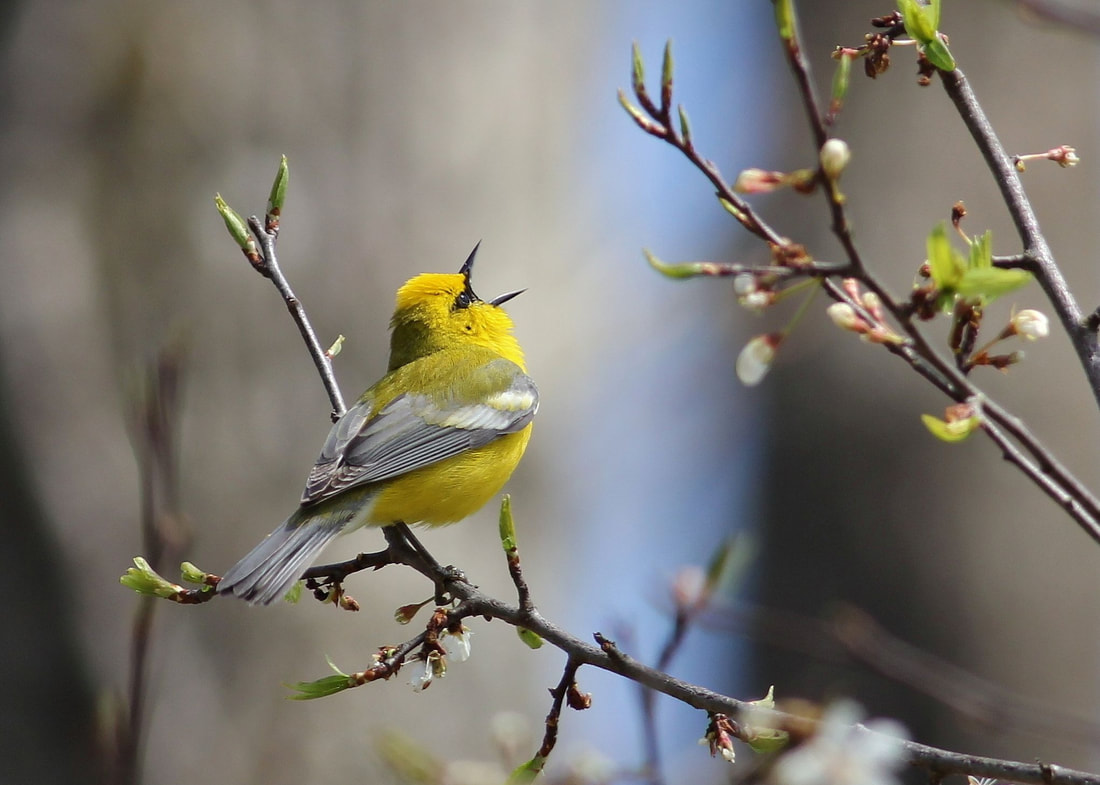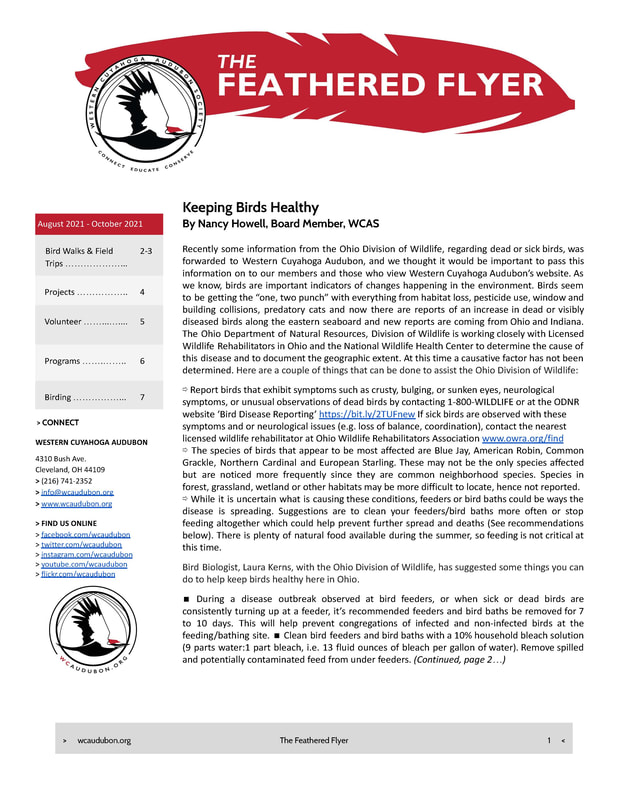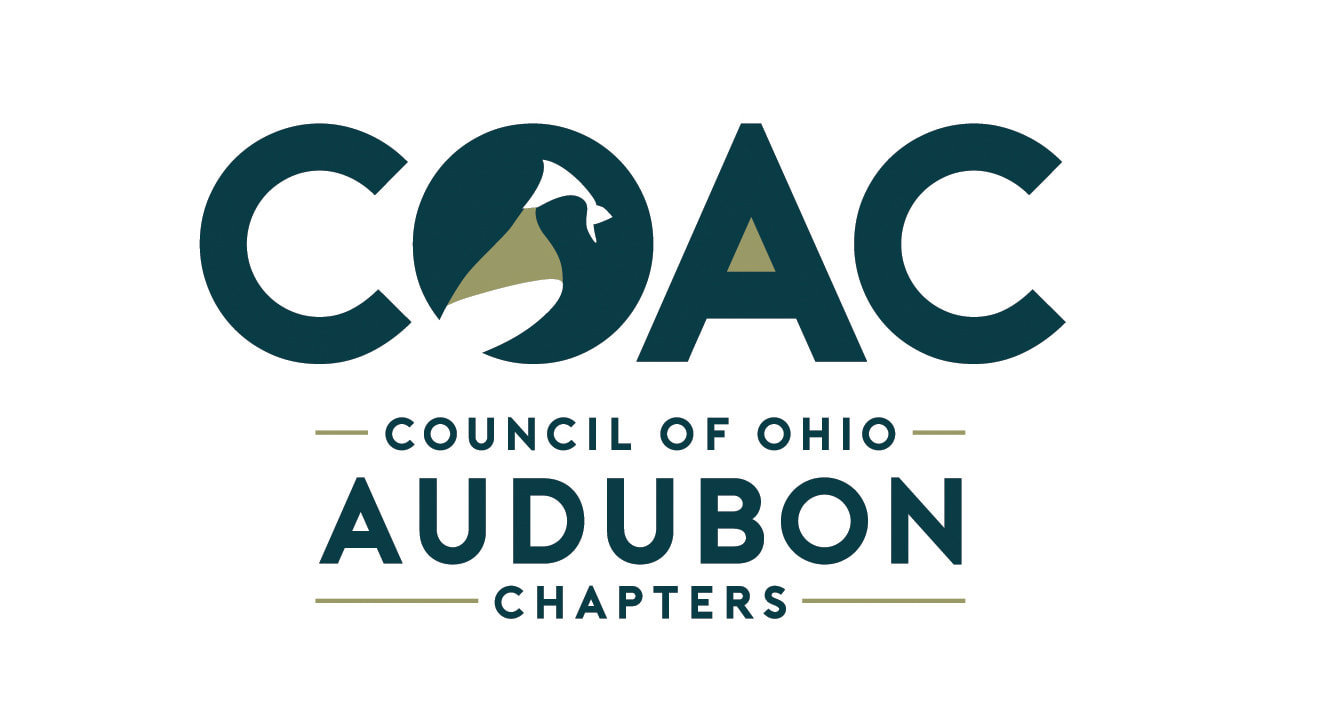What is the culprit of plummeting bird populations? The usual suspects: habitat loss, pesticides, and climate change. However, a few other offenders are now in the spotlight: outdoor cats, light pollution, and building/window collisions. It seems bird population decline is a complex problem that will require more than one solution. Fortunately, there are many ways in which we can help.
Nearly Three Billion Birds Gone. How Can We Help?
By Michelle Brosius, Western Cuyahoga Audubon Board Member Last week, bird lovers around the world held a sharply drawn breath when they tuned into the news and faced a headline that went something like this: “North America Has Lost More Than 1 in 4 Birds in Last 50 Years, New Study Says.” In the largest study of its kind, using data from multiple organizations including the Cornell Lab of Ornithology, The American Bird Conservancy, and the Smithsonian Migratory Bird Center, coupled with data from weather radars that capture the biomass of migrating birds, it was found that the continent has, indeed, nearly three billion fewer birds today than it did 50 years ago. The culprit? The usual suspects: habitat loss, pesticides, and climate change. However, a few other offenders are now in the spotlight: outdoor cats, light pollution, and building/window collisions. It seems bird population decline is a complex problem that will require more than one solution. Fortunately, there are many ways in which we can help.
Please join me in taking action to protect our birds today by considering the above solutions to bird population decline. View: Nearly Three Billion Birds Gone. How Can We Help? By Michelle Brosius, Western Cuyahoga Audubon Board Member PDF
Make A Donation to Western Cuyahoga Audubon. Your gifts guarantee chapter activities, programs and research continues to reach members and connect birding conservationists around the world. Use our safe and secure PayPal payment button below to make a donation of any amount you choose. All donations are gratefully received.
Comments
|
Story BlogThe Feathered Flyer blog publishes human interest stories about birding and habitat conservation. After watching, ‘My Painted Trillium Quest' by Tom Fishburn, Kim Langley, WCAS Member said, “Wonderful! It was a lift just knowing that such a site exists and is being protected!”
Media LibrariesQuarterly NewsletterSTORIESPodcastsWCAS is a proud member of The Council of Ohio Audubon Chapters (COAC) and promotes chapter development by sharing the best practices, brainstorming solutions to common problems, and building relationships in workshops and retreats. Subscribe
VideosYouth
Advocacy
Clean Energy
Reporting
Awards
Volunteerism
Take ActionResourcesBlogsArchives
October 2023
Categories
All
|
EDUCATENews Blog
Monthly Speakers Field Reports Bird Walk Reports Christmas Bird Count-Lakewood Circle Media Library Newsletter Archive Education Resources STORE |
Western Cuyahoga Audubon Society
4310 Bush Avenue Cleveland, Ohio 44109 [email protected] Western Cuyahoga Audubon Society is a 501(c)(3) nonprofit organization. Your donation is tax-deductible. The tax ID number is: 34-1522665. If you prefer to mail your donation, please send your check to: Nancy Howell, Western Cuyahoga Audubon Treasurer, 19340 Fowles Rd, Middleburg Hts, OH 44130. © 2020 Western Cuyahoga Audubon Society. All rights reserved. Privacy Policy | Terms of Use | Legal | Store Shipping Rates | Site Map |










 RSS Feed
RSS Feed

